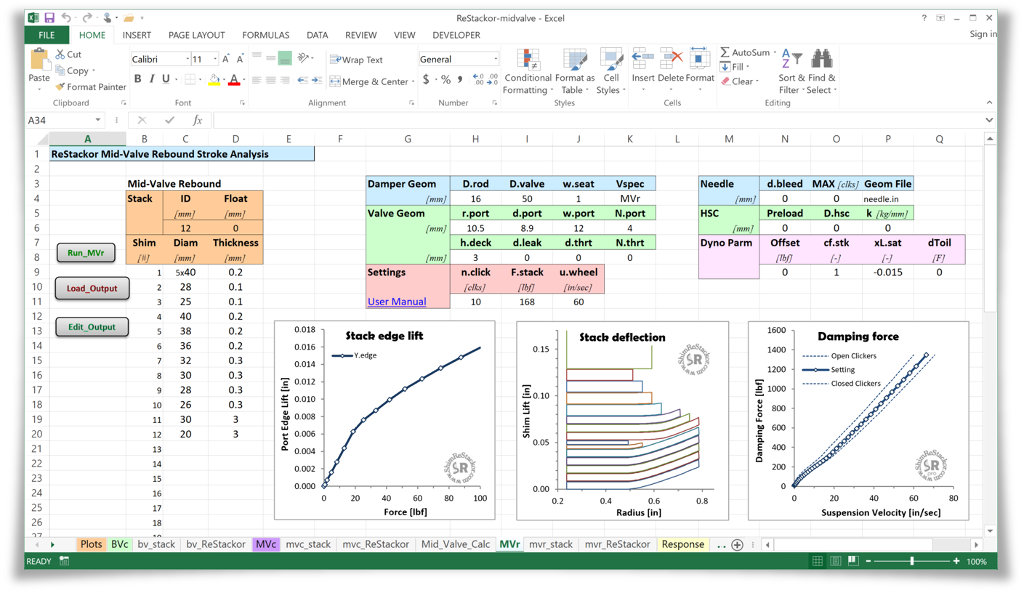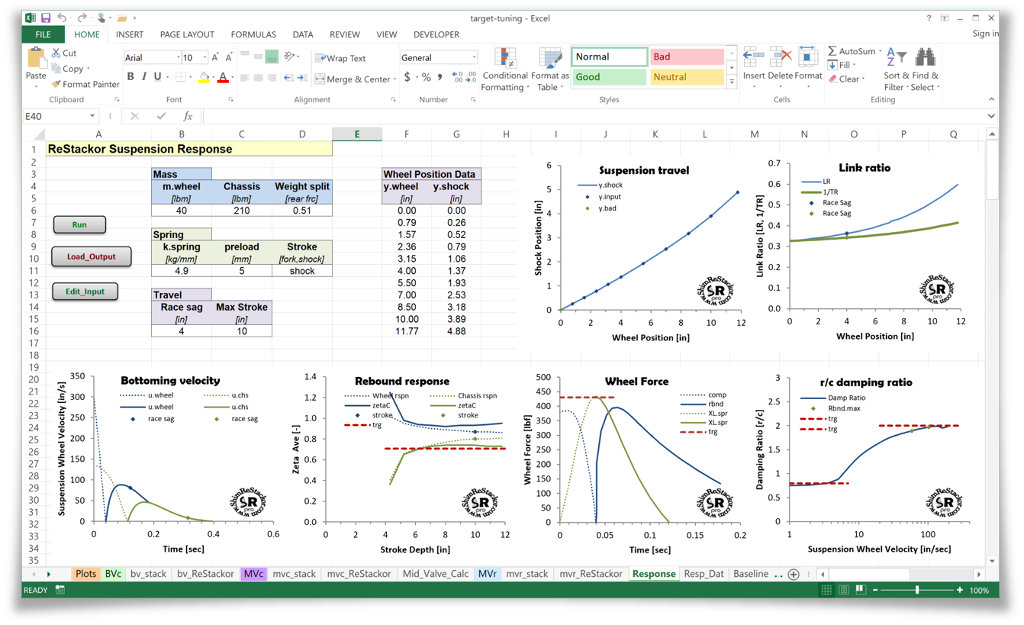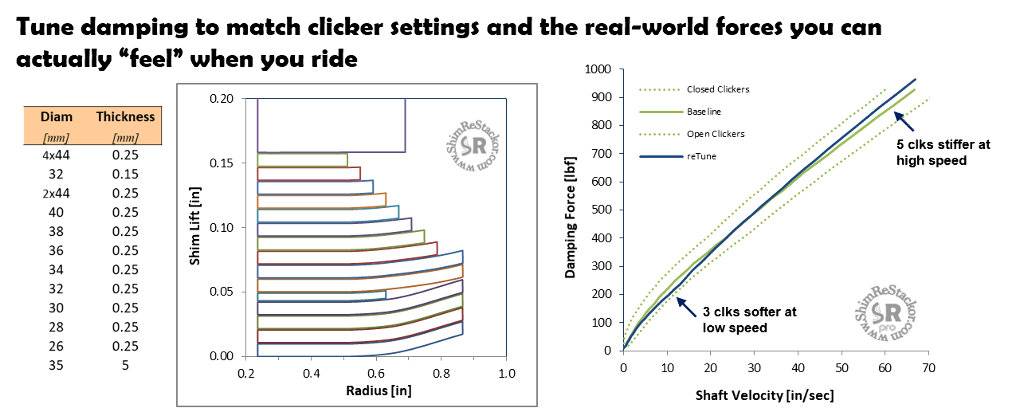Fine tune shock absorber performance far beyond the limits previously possible
Shim ReStackor computes the damping force of shock absorbers, the flow resistance of shock absorber valves and the stiffness of complex shim stack structures. The spreadsheet based shim stack calculator displays deflection of the shim stack, the closure of crossover gaps, the range of clicker tuning and the damping force produced by the shock across the entire range of suspension velocities.
Retuning shock absorbers to produce the desired damping force is simply a matter of adding or removing shims from the shim stack. The capability to see the effect of each shim stack modification on damping performance makes tuning simple, easy and intuitive. Shim ReStackor takes the guesswork out of shim stack tuning (more).

Optimize suspension response
The basic physics of F=ma dictates suspension motion. Shim ReStackor response calculations combine spring rate, rider weight, bike weight, link ratio and damping to determine jump landing bottoming resistance and chassis deflection off high speed bumps. Stiff compression damping required for jump landing bottoming resistance produces poor suspension compliance defining the difference between motocross and enduro suspension setups (more).
Spring-mass-damper theory defines rebound damping zeta values of 0.7 to give the fastest possible suspension response with damping stiff enough to suppress suspension resonance. Shim ReStackor response calculations compute rebound damping zeta values on short and deep strokes allowing tuning of the suspension setup to produce a consistent response, “feel”, and behavior across the range of suspension stroke depths (more).

Take the guesswork out of shim stack tuning
A simple listing of shim diameter and thickness specifies the shim stack configuration. Finite element analysis thoroughly evaluates the shim stack structure including effects of clamp shims, stack tapper, changes in shim thickness, multiple crossover gaps and preloading ring shims (more).
Fluid dynamic analysis determines the resulting valve flow resistance and damping performance produced by the shock across the entire range of suspension velocities. Visualization of the connection between shim stack deflection and damping force makes tuning simple, easy and intuitive (more).

Simple inputs – Thorough analysis – Practical results
Simple measurements specify the shock absorber valve port geometry. The parameters r.port, d.port and w.port define the valve port area applying fluid pressure to the shim stack face.
Those same parameters also define the port perimeter spill length controlling fluid flow and the damping performance of the shock absorber (more).

Oil viscosity, clicker needle geometry, leak jets, stack float and valve port throat restrictions complete description of tunable valve port parameters.
Shim ReStackor computes the damping force of fork base valves (or compression adjusters) main piston mid-valves as well as the combined damping force of both valves and the cavitation limits of the shock (more).
Relentless fine tuning
Whether you are setting up a new suspension or fine tuning a shock you have ridden for years, Shim ReStackor provides the tools needed to fine tuning damping performance. The example below applies the results of a test ride to reset compression damping 3 clicks softer at low speed and 5 clicks stiffer at high speed.
The capability to fine tune damping in terms of clicker settings takes the guess-work out of shim stack tuning to setup the suspension in terms of the real-world forces you can actually “feel” when you ride (more).

